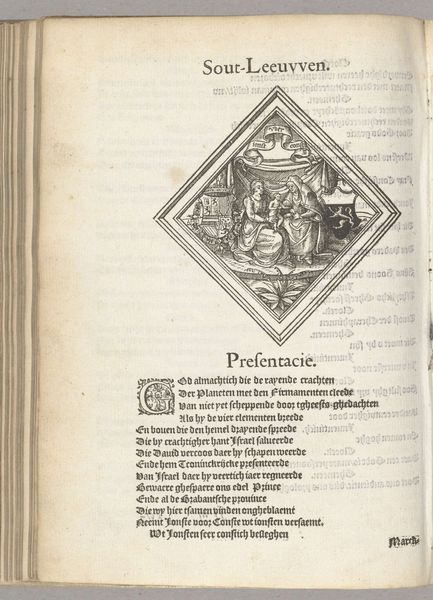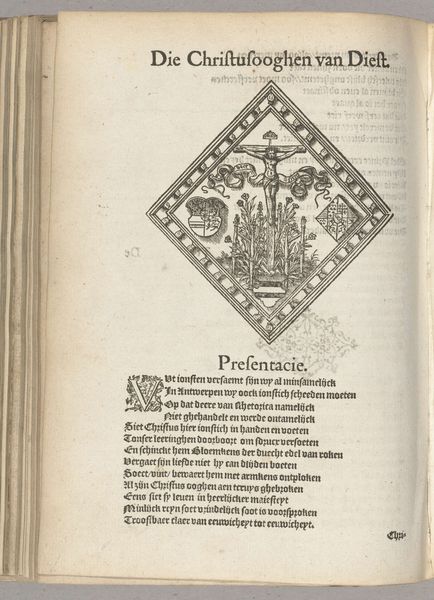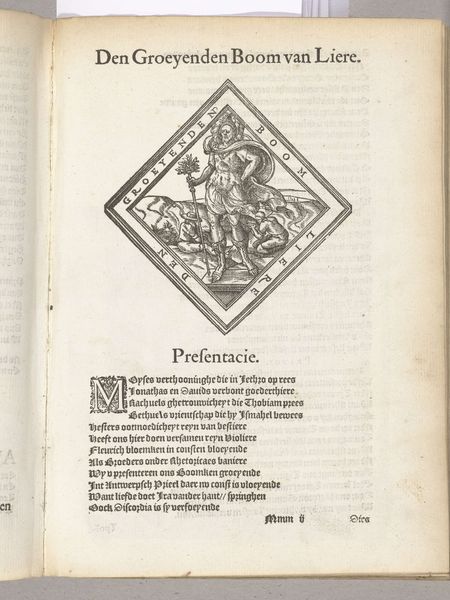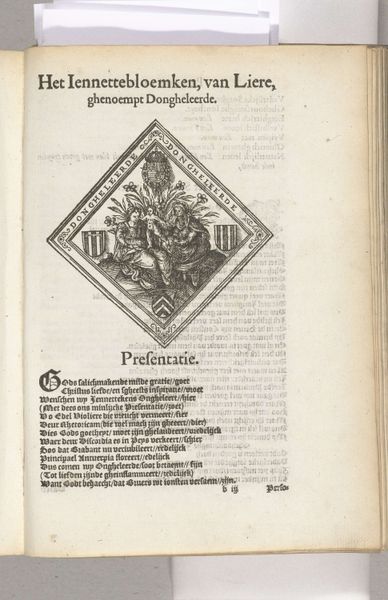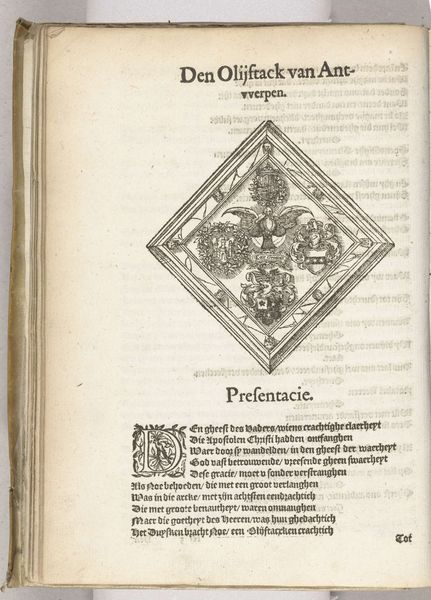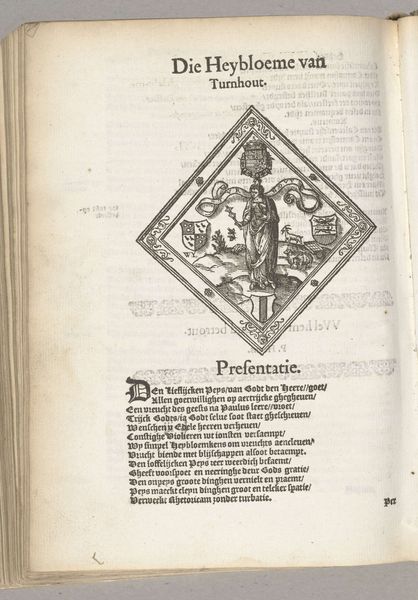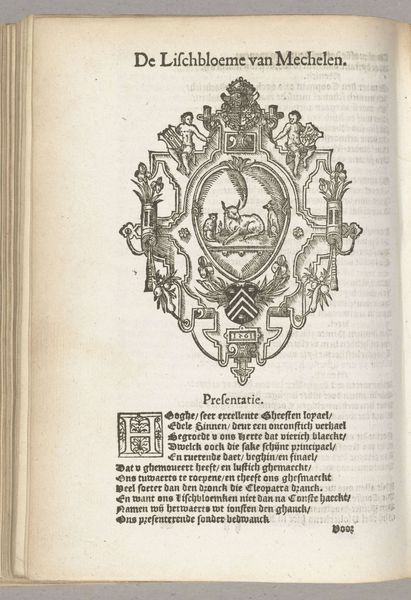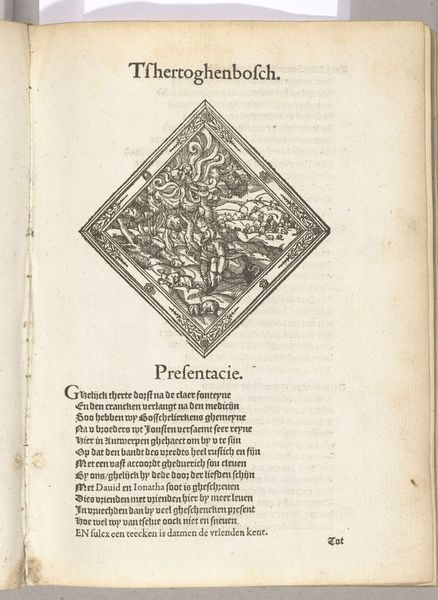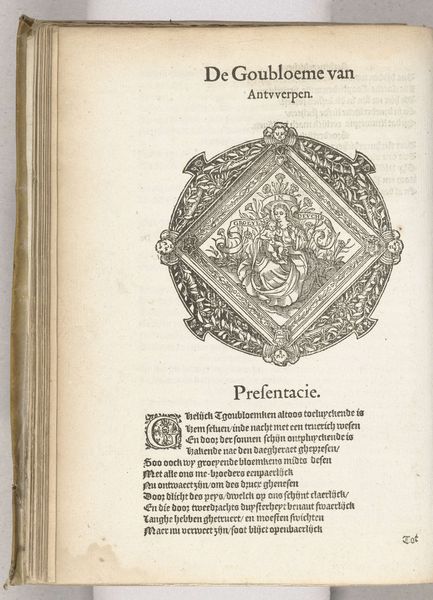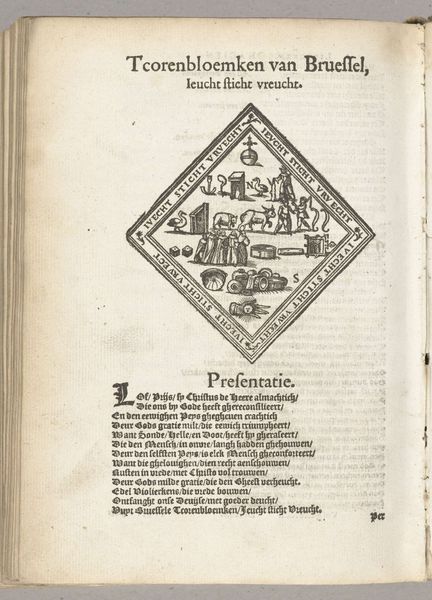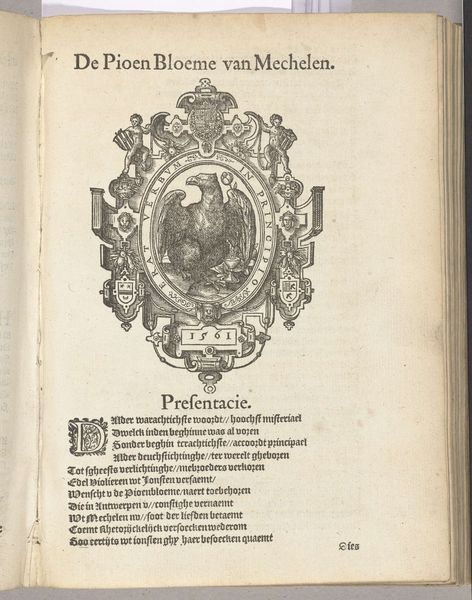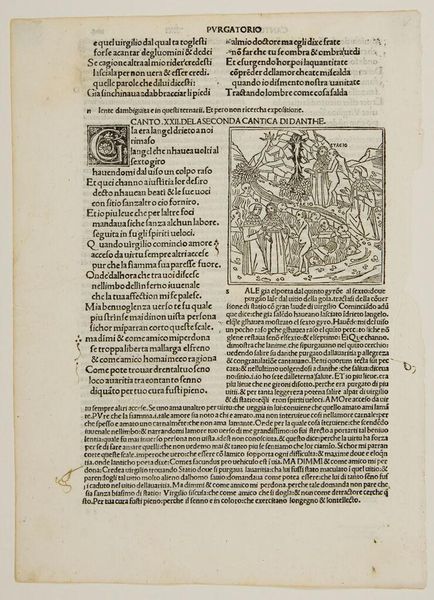
drawing, graphic-art, print, textile, engraving
#
drawing
#
graphic-art
#
medieval
# print
#
textile
#
form
#
geometric
#
line
#
engraving
Dimensions: height 217 mm, width 153 mm
Copyright: Rijks Museum: Open Domain
Editor: So, this engraving is called "Vertoning van De Cauwoerde (Herentals), 1561," made around 1561-1562 by an anonymous artist. It's primarily lines and geometric shapes, clearly part of a printed book, probably even a textile design given how some areas almost create the impression of knots, weaves, and threads. The diamond shape really catches the eye... What aspects of this work stand out to you? Curator: As a materialist, I’m immediately drawn to the engraving process itself. Think about the labor involved in creating these precise lines with tools, perhaps to create this printed image for multiple copies or as a pattern for a textile. It challenges our traditional notions of high art. It suggests that images may have served practical purposes alongside any artistic intention. The act of reproduction using such an image democratizes art production in its era. Did the printed image circulate locally in the Dutch territories, and would this engraving also influence textile manufacture, do you think? Editor: That’s a really interesting point. I hadn't considered how the method of production could impact how we view the artwork. Looking at the material realities, the textile is an interesting aspect of this print. The patternmaking appears to have value. How would knowing more about who was consuming and creating the image shed further light? Curator: Exactly. Knowing more about the craftspeople involved – the engravers, the printers, perhaps even the textile workers who might have used this design – allows us to understand the work as a product of collective labor and cultural consumption rather than simply as the output of a single, named artist. It reframes it within its specific historical context of craft and production, no? Editor: That makes a lot of sense. It shifts the focus from the aesthetic value to the social context and material processes, giving me a new way to see the work. Curator: Indeed! It reveals how art creation often transcends simple personal skill, but is instead part of larger industrial and cultural practices that involve a larger portion of working people in an economy.
Comments
No comments
Be the first to comment and join the conversation on the ultimate creative platform.
